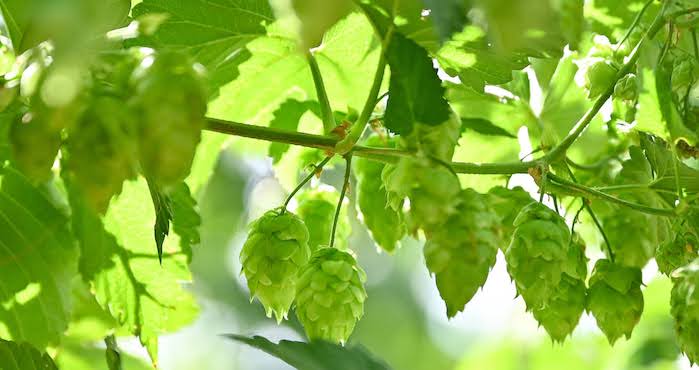Hop Science Newsletter (January 2017)
In this issue: flavour expectations, correlation between oil and hop aroma in dry hopping, and the impact of harvest date on beer flavour profiles.

A METHOD FOR REALISTIC FLAVOUR EXPECTATIONS?
The question is familiar to all of us: By assessing cone hops or pellets, how do I know what to expect from this hop when used in late hopping in terms of flavour? These Japanese researchers have developed a standardised method that is useful for this type of assessment. For this method, 0.5g of alpha acids per liter were added to distilled water and boiled at 105° C. for 5 minutes. Bitter and aroma compounds were analysed and sensory flavour profiling conducted. Though a significant correlation between sensory and analytical data was not achieved, the flavour profiling gave reproducible insights in the flavour properties of the hop varieties studied.¹
DRY HOPPING: MORE OIL = MORE HOPPY?
If I would ask you if you think a higher addition of hop oil equivalent for dry hopping would result in a hoppier beer, I am sure all of you would be quite confident that this is correct. However US researchers say perhaps not. An unhopped beer was dry hopped with 23 individual Cascade hop lots, and the resultant beer was evaluated with sensory descriptive analysis. The results demonstrated a negligible role of total oil content (mL/100 g) as an indicator of hoppiness. In fact, there was no correlation between total oil content and overall hop aroma intensity with this study. The Cascade samples had oil contents ranging from 0.6 up to 2 ml/100g of hops. I am as surprised as you are, but wouldn’t life be boring without occasional results such as these?²
LATER HARVEST DATE = MORE INTENSE DRY HOP AROMA?
Previous studies have shown that harvest date can have a significant impact on the flavour profile of beer depending on hop variety. To further illustrate the effect, this study evaluated the variety Mandarina Bavaria. These German researchers produced dry hopped beers with Mandarina Bavaria hops harvested at different dates within a 4 week period. Although it was shown that some of the known important hop aromatic compounds in dry hopped beers (especially myrcene) changed in concentration when using hops with different harvest dates, with other compounds (especially linalool) the result of sensory data showed that the harvest date of Mandarina Bavaria is not important for final top-fermented beer aroma. It is unclear which aroma components are the key components of Mandarina Bavaria.3
A CLOSE UP – HOP PARTICLES IN DRY HOPPING
In dry hopping it is all about extracting the flavours from the hop particles. These German researchers closely examined particle size during dry hopping, as the process of pellet disintegration of very important. Fast swelling hop pellets with small particle size distribution are seen as ideal for dry hopping. Swelling velocity was found to be both temperature and variety independent. The researchers also found that the swelling volume is higher in low alpha varieties. As sedimentation of particles happens quickly, agitation is suggested for better extraction. They also found the lower particle size distribution of pellets is beneficial in this context compared to the properties of hop powder prior to pelletization. These insights should help to make dry hopping more efficient!4
EVENTS
Make sure to attend the this year’s Hop Summit:
The 2nd International Brewers Symposium on Hops, July 26th to 28th, Corvallis Oregon USA http://hopsflavor2017.com
Other hoppy events:
• April 10-13, Craft Brewers Conference, Washington DC, USA
• May, 14-18, EBC Congress, Lubiljana, Slovenia
• June 4-7, ASBC Annual Meeting, Ft. Myers, FL, USA
• July 26-28, 2nd International Brewers Symposium, Corvallis OR, USA
REFERENCES:
1. Koie, K: Construction and Demonstration of a Standardized Hop Boiled Water Extraction Method and Its Application for a Sensory Evaluation System of Hop Aroma Characteristics http://www.asbcnet.org/publications/journal/vol/2016/Pages/ASBCJ-2016-3664-01.aspx
2. Vollmer, D: Influence of Hop Oil Content and Composition on Hop Aroma Intensity in Dry-Hopped Beer http://www.asbcnet.org/publications/journal/vol/2016/Pages/ASBCJ-2016-4123-01.aspx
3. Schnaitter, M: Influence of hop harvest date of the ‘Mandarina Bavaria’ hop variety on the sensory evaluation of dry-hopped top-fermented beer http://onlinelibrary.wiley.com/wol1/doi/10.1002/jib.382/full
4. Engstle, D: Disintegration of Hop Pellets during Dry Hopping http://www.brewingscience.de/index.php?tpl=table_of_contents&year=2016&edition=0011%2F0012&article=88949
